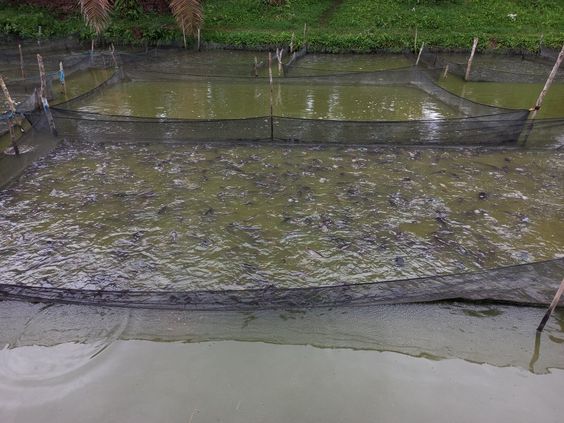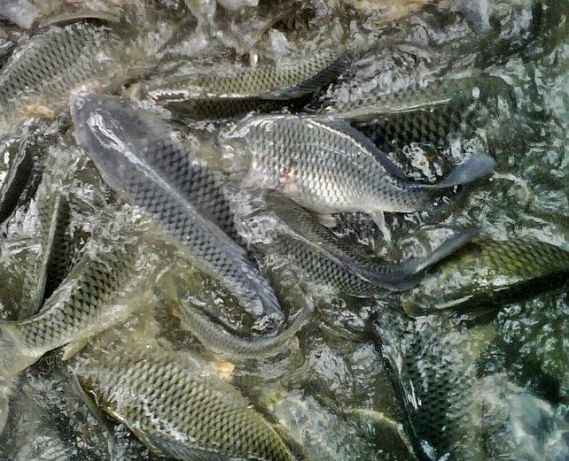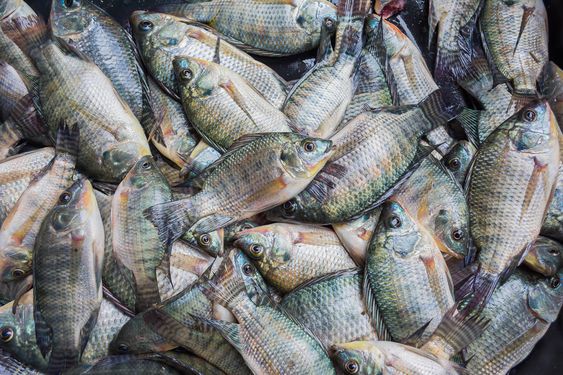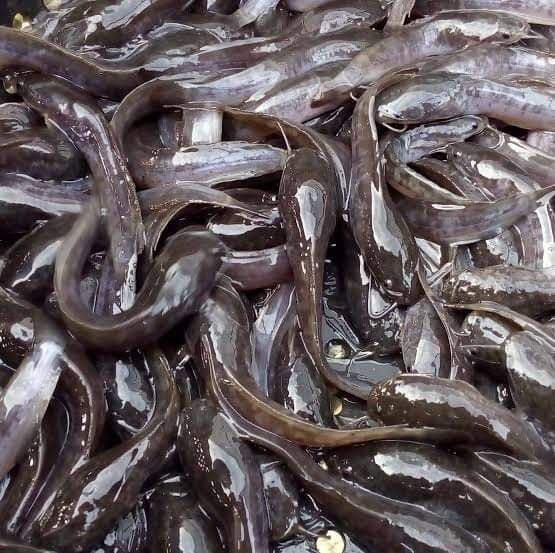Tilapia Conservation: Protecting a Vital Aquatic Resource
Tilapia Conservation, a genus of cichlid fish native to Africa and the Middle East, has become a cornerstone of aquaculture and a significant food source globally. However, the rapid expansion of tilapia farming and the introduction of non-native species into various ecosystems have raised concerns about the conservation of wild tilapia populations. This article delves into the complexities of tilapia conservation, exploring the challenges, opportunities, and strategies to safeguard this valuable resource.
Contents
- 1 the Importance of Tilapia Conservation
- 2 Challenges in Tilapia Conservation
- 3 Conservation Goals and Strategies
- 4 Conservation Ideas and Topics
- 5 Advantages of Tilapia Conservation
- 6 The Critical Role of Genetics in Tilapia Conservation
- 7 Indigenous Knowledge and Tilapia Conservation
- 8 The Impact of Microplastics on Tilapia Populations
- 9 Tilapia as a Climate Change Adaptor
the Importance of Tilapia Conservation
Tilapia conservation is crucial for several reasons:
- Biodiversity Preservation: Wild tilapia species contribute to aquatic biodiversity, playing vital roles in their ecosystems as prey, predators, and ecosystem engineers.
- Genetic Diversity: Conserving diverse tilapia populations helps maintain genetic variability, essential for adapting to changing environmental conditions and resisting diseases.
- Food Security: Protecting wild tilapia stocks ensures a sustainable supply of fish for human consumption, especially in regions reliant on fisheries.
- Ecosystem Balance: Tilapia play a crucial role in maintaining ecological balance, influencing water quality, nutrient cycling, and the overall health of aquatic ecosystems.
Challenges in Tilapia Conservation
Tilapia conservation faces numerous challenges:
- Habitat Loss and Degradation: Destruction of wetlands, deforestation, and pollution threaten tilapia habitats.
- Overfishing: Unsustainable fishing practices deplete wild tilapia populations.
- Invasive Species: Non-native tilapia species can outcompete and displace native populations, leading to genetic erosion.
- Aquaculture Escapes: Tilapia from aquaculture facilities can escape into natural waters, hybridizing with wild populations and introducing diseases.
- Climate Change: Rising temperatures, altered precipitation patterns, and ocean acidification impact tilapia populations and their habitats.
Conservation Goals and Strategies
Effective tilapia conservation requires a multi-faceted approach:
- Habitat Protection and Restoration: Establishing protected areas, restoring wetlands, and implementing water quality management practices are essential.
- Sustainable Fisheries Management: Implementing catch limits, gear restrictions, and size limits can help prevent overfishing.
- Invasive Species Management: Controlling the spread of non-native tilapia through early detection, eradication, and prevention measures is crucial.
- Aquaculture Best Practices: Promoting responsible aquaculture practices, including biosecurity measures and containment systems, can minimize environmental impacts.
- Community Engagement: Involving local communities in conservation efforts is essential for long-term success.
- Research and Monitoring: Conducting scientific research to understand tilapia ecology and population dynamics is vital for developing effective conservation strategies.
- Genetic Conservation: Protecting genetically diverse tilapia populations through captive breeding and gene banks is essential.
Conservation Ideas and Topics
- Case studies of successful tilapia conservation projects: Highlight examples of effective conservation initiatives to inspire and inform others.
- Economic valuation of tilapia ecosystem services: Quantify the benefits of tilapia to ecosystems and human well-being to demonstrate the importance of conservation.
- Development of sustainable tilapia aquaculture practices: Explore innovative approaches to tilapia farming that minimize environmental impacts and support wild populations.
- Policy recommendations for tilapia conservation: Identify policy gaps and propose solutions to strengthen tilapia conservation efforts.
- Public awareness campaigns: Develop educational materials to raise awareness about the importance of tilapia conservation and engage the public in conservation actions.
Advantages of Tilapia Conservation
Investing in tilapia conservation offers numerous benefits:
- Environmental benefits: Protecting biodiversity, maintaining ecosystem health, and mitigating climate change impacts.
- Economic benefits: Supporting sustainable fisheries and aquaculture industries, creating jobs, and enhancing food security.
- Social benefits: Improving livelihoods of fishing communities, providing access to nutritious food, and promoting cultural heritage.
The Critical Role of Genetics in Tilapia Conservation
Tilapia Conservation, the genetic makeup of tilapia populations is fundamental to effective conservation. Genetic diversity is essential for a species’ adaptability to changing environmental conditions, including diseases, climate change, and habitat alterations.
- Genetic Bottlenecks: Overfishing and habitat loss can drastically reduce population sizes, leading to genetic bottlenecks. This results in a loss of genetic diversity, making populations more vulnerable to threats.
- Hybridization: The introduction of non-native tilapia species can lead to hybridization with native populations, diluting the genetic integrity of the latter.
- Genetic Monitoring: Regular genetic monitoring of tilapia populations can help identify genetic bottlenecks, hybridization events, and other threats to genetic diversity.
- Captive Breeding and Gene Banks: Establishing captive breeding programs and gene banks for endangered tilapia species can help preserve genetic diversity and provide a source of individuals for reintroduction programs.
Indigenous Knowledge and Tilapia Conservation
Tilapia Conservation,Indigenous communities have centuries of knowledge about fish and their ecosystems. Incorporating this knowledge into conservation efforts can significantly enhance their effectiveness.
- Traditional Ecological Knowledge: Indigenous people possess deep understanding of fish behavior, migration patterns, and habitat requirements.
- Community-Based Conservation: Empowering local communities to participate in conservation planning and management can lead to more sustainable outcomes.
- Co-Management: Collaborative management approaches between government agencies and indigenous communities can strengthen conservation efforts.
The Impact of Microplastics on Tilapia Populations
Microplastics, tiny plastic particles, are ubiquitous in aquatic environments. Their impact on tilapia populations is a growing concern.
- Bioaccumulation: Tilapia can ingest microplastics, which can accumulate in their tissues and potentially harm their health.
- Trophic Transfer: Microplastics can move up the food chain, affecting other aquatic organisms and ultimately humans.
- Habitat Degradation: Microplastics can alter aquatic ecosystems, affecting tilapia habitat and food availability.
Tilapia as a Climate Change Adaptor
Tilapia Conservation adaptability to various environmental conditions makes it a potential climate change “winner.” However, climate change also poses significant challenges to tilapia populations.
- Range Shifts: As water temperatures rise, tilapia populations may shift their geographic ranges.
- Habitat Loss: Climate change-induced sea-level rise and extreme weather events can destroy tilapia habitats.
- Disease Outbreaks: Warmer water temperatures can increase the prevalence of diseases affecting tilapia.
- Aquaculture Adaptation: The aquaculture industry needs to adapt to climate change by developing climate-resilient practices.
Tilapia conservation is a complex issue with far-reaching implications. By addressing genetic diversity, incorporating indigenous knowledge, mitigating the impact of microplastics, ensuring food security, and adapting to climate change, we can protect this valuable resource for future generations. Continued research, monitoring, and collaboration among scientists, policymakers, and communities are essential for successful tilapia conservation. Tilapia Conservation,Aquaculture can be a valuable tool for tilapia conservation in East Africa, but it must be developed and managed responsibly. By adopting sustainable practices and integrating aquaculture with fisheries management, it is possible to harness the benefits of this sector while protecting wild tilapia populations.






